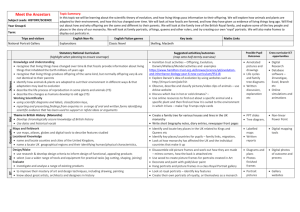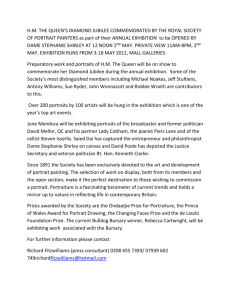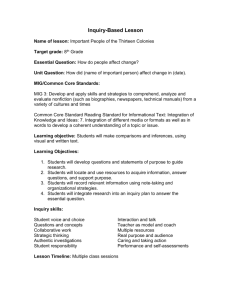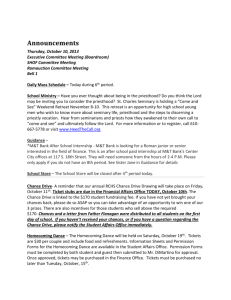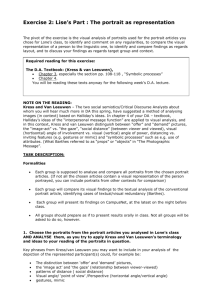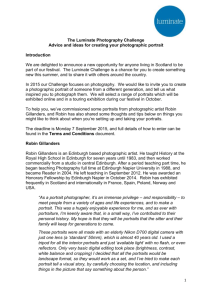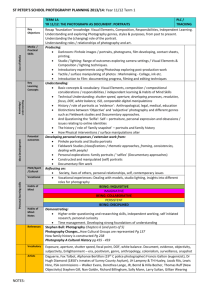KS2 Scheme of Work Mandarin Chinese
advertisement
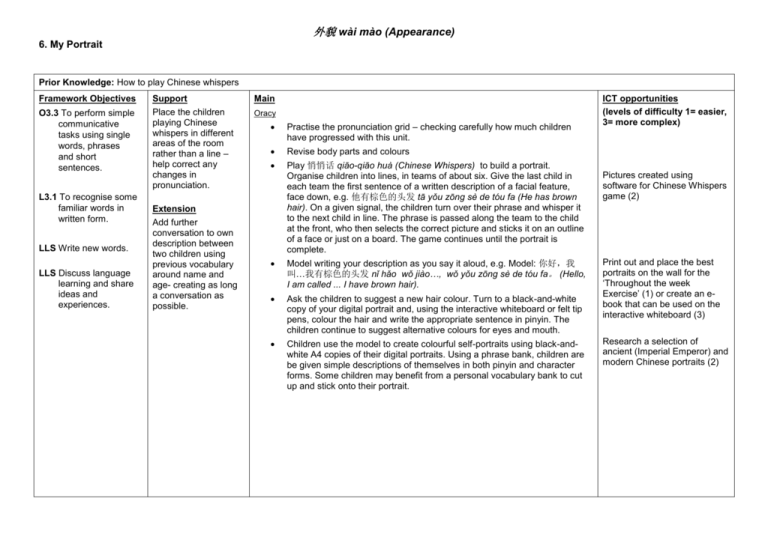
外貌 wài mào (Appearance) 6. My Portrait Prior Knowledge: How to play Chinese whispers Framework Objectives O3.3 To perform simple communicative tasks using single words, phrases and short sentences. L3.1 To recognise some familiar words in written form. LLS Write new words. LLS Discuss language learning and share ideas and experiences. Support Place the children playing Chinese whispers in different areas of the room rather than a line – help correct any changes in pronunciation. Extension Add further conversation to own description between two children using previous vocabulary around name and age- creating as long a conversation as possible. Main Oracy Practise the pronunciation grid – checking carefully how much children have progressed with this unit. Revise body parts and colours Play 悄悄话 qiāo-qiāo huà (Chinese Whispers) to build a portrait. Organise children into lines, in teams of about six. Give the last child in each team the first sentence of a written description of a facial feature, face down, e.g. 他有棕色的头发 tā yǒu zōng sè de tóu fa (He has brown hair). On a given signal, the children turn over their phrase and whisper it to the next child in line. The phrase is passed along the team to the child at the front, who then selects the correct picture and sticks it on an outline of a face or just on a board. The game continues until the portrait is complete. Model writing your description as you say it aloud, e.g. Model: 你好,我 叫…我有棕色的头发 nǐ hǎo wǒ jiào…, wǒ yǒu zōng sè de tóu fa。 (Hello, I am called ... I have brown hair). Ask the children to suggest a new hair colour. Turn to a black-and-white copy of your digital portrait and, using the interactive whiteboard or felt tip pens, colour the hair and write the appropriate sentence in pinyin. The children continue to suggest alternative colours for eyes and mouth. Children use the model to create colourful self-portraits using black-andwhite A4 copies of their digital portraits. Using a phrase bank, children are be given simple descriptions of themselves in both pinyin and character forms. Some children may benefit from a personal vocabulary bank to cut up and stick onto their portrait. ICT opportunities (levels of difficulty 1= easier, 3= more complex) Pictures created using software for Chinese Whispers game (2) Print out and place the best portraits on the wall for the ‘Throughout the week Exercise’ (1) or create an ebook that can be used on the interactive whiteboard (3) Research a selection of ancient (Imperial Emperor) and modern Chinese portraits (2) 外貌 wài mào (Appearance) 6. My Portrait Throughout the week: Look at the portraits on the wall and describe them with the help of the children or read the e-book of portraits to revise the vocabulary. Main Follow up Activities ICT Follow up Activities Build a class display of the portraits and use to play the ‘Guess Who?’ game. Use portraits and sound files /podcasts to record conversations against the portraits. On each page of the presentation have portraits and sound adding an additional exchange between the 2 children (3). Look at different forms of portraits – their own, those of Imperial emperors, modern Chinese portraits. Learning Outcomes Children: recall and pronounce accurately up to six colours and body parts. explore appearance through portraits. describe themselves in terms of appearance. National Curriculum Links Primary framework for literacy Strand 1 Speaking; Y2 - speak with clarity and use appropriate intonation. Strand 2 Listening and responding; Y2 – listen to others in class, ask relevant questions and follow instructions. Strand 3 Group discussion and interaction; Y3 – actively include and respond to al members of the group. Art and design 5a Explore a range of starting points – for example themselves. Teaching Tips Ensure mixed-ability teams for Chinese Whispers. Place less confident children at the end of the team with a partner, to select the appropriate pictures. Ensure the children gain a sense of historical portraits (of Emperors) and modern portraits and self-portraits as well as different media for portraits (paintings versus photos) . Resources Colour and body part flashcards. ICT Resources Podcasting equipment including editing software and microphone. Software/application for creating self-portraits using clip art or drawings. 外貌 wài mào (Appearance) 6. My Portrait 老师的词汇 Teacher Language 学生的词汇 Children’s Language 悄悄话 qiāoqiāo huà 写 xiě Chinese Whispers Write 鼻子 bí zi Nose 手臂 shǒu bì Arm 手肘 shǒu zhǒu Elbow 头 tóu Head 头发 tóu fa Hair 嘴巴 zuǐ ba Mouth 腿 tuǐ Leg 肩膀 jiān bǎng 膝盖 xīg ài 脚 jiǎo 手指 shǒu zhǐ 脚趾 jiǎo zhǐ 眼睛 yǎn jing 耳朵 ěr duo 红色 hóng sè 粉红色 fěn hóng sè 橙色 chéng sè 黄色 huáng sè Shoulders Knees Feet Fingers Toes Eye(s) Ears Red Pink Orange Yellow Blue 蓝色 lán sè Green 绿色 lǜ sè Black 黑色 hēi sè White 白色 bái sè Purple 紫罗兰色/紫色 zǐ luó lán sè/ zǐ sè 棕色/咖啡色 zōng sè / kā fēi sè 蓝色的嘴巴 lán sè de zuǐ ba 他/她有… tā /tā yǒu 你好 nǐ hǎo 我叫 wǒ jiào Brown A blue mouth He/She has Hello I’m called… 外貌 wài mào (Appearance) 6. My Portrait End of Unit activities Learning Objectives To apply the knowledge, skills and understanding in this unit. Teaching Activities Children present their portraits and descriptions either to their partner school, secondary school where Chinese is taught or a visitor from the local community who is native Chinese. Build a display of children’s colourful portraits. The display can then be used for a ‘Guess Who?’ game. Discuss their language learning and share ideas and experiences on the classroom language learning log. Learning Outcomes Use their portraits for a variety of purposes namely a game, communication with others about their identity as a source of revision around conversations Points to note Children can use ICT to record, display and, if appropriate, send information. Link with literacy work: This work links to making choices about which ICT programmes to select when presenting texts.

